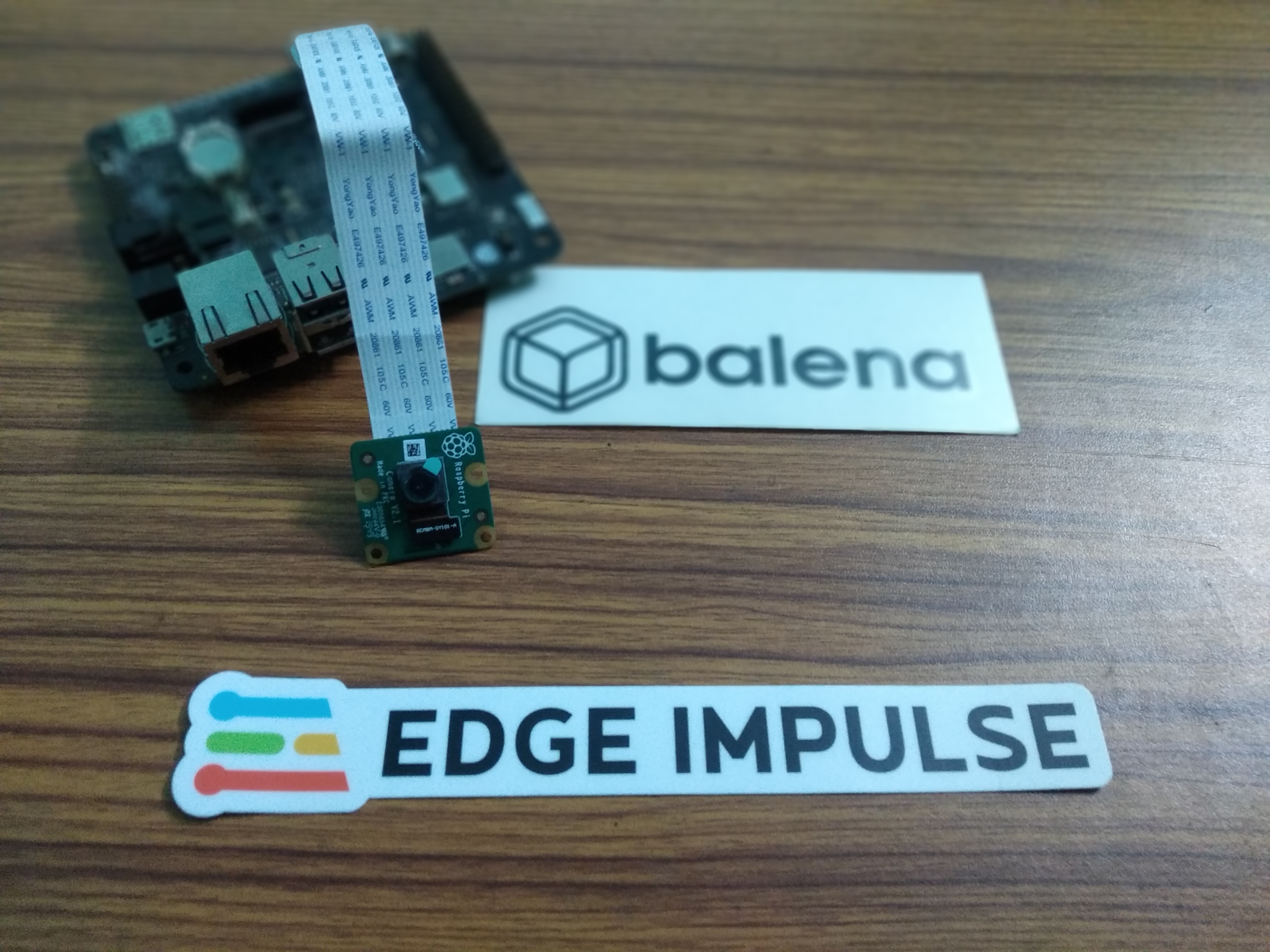This guide is a part of the series of deploying of the project Pneumonia Detection using EdgeML on your Raspberry Pi using balena.
OverviewThis project enables a Raspberry Pi with a camera to become a Pneumonia Classification expert system using Edge Machine Learning system. This system is AI-based pneumonia classifier using Edge Impulse model.
This project is also based on the great BalenaCam project to live stream your camera's feed by running a webapp in a container. For this application we leverage the multi-containers feature of Balena by adding a second container running Edge Impulse WebAssembly inference engine inside a Node.js server. The 2 containers communicate with each other through websockets. The balena-cam webapp has been modified to call the inference engine every second and display the results of the Pneumonia Classification expert on the webpage.
This application is intended for informational, educational and research purposes only. It is not, and it is not intended, for use in the diagnosis of disease or other conditions, or in the cure, mitigation, treatment or prevention of pneumonia. Health care providers should exercise their own independent clinical judgment when using this application in conjunction with patient care.
Deploying the codeClick on the deploy-with-balena button as given below, which will help you to deploy your application to balenaCloud and then to your Raspbery Pi in one-click!
If you don't have a balenaCloud account, first thing you'll need to do is sign up for a balenaCloud account. If you've already got a Github or Google account you can use that to log in and bypass the signup process on the balenaCloud.
Add a device and download the OSOnce your application has been created and the code is being releases on the app on balenaCloud, click the blue button Add Device. When you add a device you specify your device type (Raspberry Pi 3, 4 or balenaFin). If you are connecting to a wireless network you will need to set your WiFi SSID and credentials here too.
This process will create a customized image configured for your application and device type and includes your network settings.
Flash your SD card and boot the deviceOnce the OS image has been downloaded, it's time to flash your SD card. You can use balenaEtcher for this.
Once the flashing process has completed, insert your SD card into your device and connect the power supply.
When the device boots for the first time, it connects to the balenaCloud dashboard, after wchich you'll be able to see it listed as online. If the release went well, the new services will be downloaded in your device and it will start the containers running the services.
Testing the classifierOnce the containers are deployed on your device using balena. Enable the Public device URL on your device. Open your browser using the public URL provided by balenaCloud or enter your device's local IP.
The camera feed should be displayed on the webpage. If you notice slow framerate, probably your web browser doesn't support WebRTC and your client has switched to MJPEG. You can check next section to debug WebRTC.
Try to move different objects in front of the camera and see how well the classifier works! Predictions are displayed for all labels with values between 0 and 1, 1 being perfect prediction.
Additional Information- This project uses WebRTC (a Real-Time Communication protocol).
- A direct WebRTC connection fails in some cases.
- This current version uses mjpeg streaming when the webRTC connection fails.
Chrome browsers will hide the local IP address from WebRTC, making the page appear but no camera view. To resolve this try the following
- Navigate to chrome://flags/#enable-webrtc-hide-local-ips-with-mdns and set it to Disabled
- You will need to relaunch Chrome after altering the setting
- Chrome browsers will hide the local IP address from WebRTC, making the page appear but no camera view. To resolve this try the followingNavigate to chrome://flags/#enable-webrtc-hide-local-ips-with-mdns and set it to DisabledYou will need to relaunch Chrome after altering the setting
Firefox may also hide local IP address from WebRTC, confirm following in 'config:about'
- media.peerconnection.enabled: true
- media.peerconnection.ice.obfuscate_host_addresses: false
- Firefox may also hide local IP address from WebRTC, confirm following in 'config:about'media.peerconnection.enabled: truemedia.peerconnection.ice.obfuscate_host_addresses: false
If you wish to test the app in Balena local mode, you'll need to add your Edge Impulse Project ID and API Key in edgeimpulse-inference/app/downloadWasm.sh.
BalenaCam advanced options are available in this guide.
BalenaCam supported browsers- Chrome (but see note above)
- Firefox (but see note above)
- Safari
- Edge (only mjpeg stream)



















Comments
Please log in or sign up to comment.